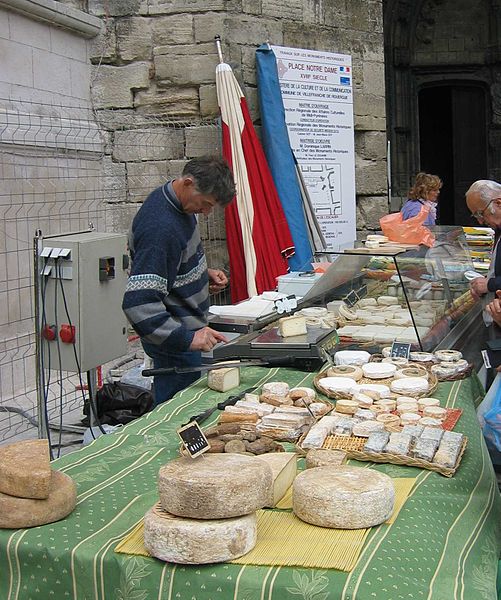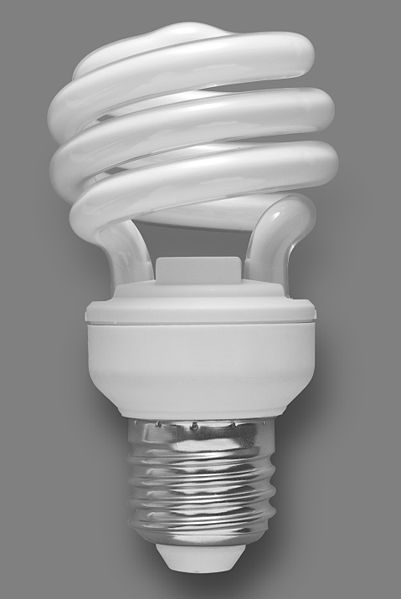Forgotten Weapons
Published 2 Aug 2017Armament Research Services (ARES) is a specialist technical intelligence consultancy, offering expertise and analysis to a range of government and non-government entities in the arms and munitions field. For detailed photos of the guns in this video, don’t miss the ARES companion blog post:
http://armamentresearch.com/pa-luty-9…
Phillip A. Luty was a Briton who took a hard philosophical line against gun control legislation in the UK in the 1990s. In response to more restrictive gun control laws, he set out to prove that all such laws were ultimately futile by showing that one could manufacture a functional firearm from hardware store goods, without using any purpose-made firearms parts.
Luty succeeded in this task, designing a 9mm submachine gun made completely from scratch with a minimum of tools. In 1998, he published the plans for his gun as the book Expedient Homemade Firearms. Luty was not particularly discreet about his activities (actually, he was quite outspoken…) and was eventually caught by the police while out to test fire one of his guns, and arrested. He was convicted, and spent several years in prison. He continued to pursue a gun rights agenda after being released, and was facing legal trouble again when he passed away from cancer in 2011.
Several of Luty’s submachine guns are still held in the collection of the Royal Armouries’ National Firearms Centre, including the one that led to his original conviction. Many thanks to the NFC for allowing me to bring that weapon to you!
http://www.patreon.com/ForgottenWeapons
Cool Forgotten Weapons merch! http://shop.bbtv.com/collections/forg…
If you enjoy Forgotten Weapons, check out its sister channel, InRangeTV! http://www.youtube.com/InRangeTVShow
May 8, 2020
Weapons as Political Protest: P.A. Luty’s Submachine Gun
April 28, 2020
QotD: Rent control in Stockholm
Take Sweden, which introduced effective rents controls nationwide in 1947. They were supposed to be a temporary measure, yet they remain in place to this day, despite criticism from academics, think tanks and the OECD. While the intention to create a more socially dynamic society was laudable, the reality has been much bleaker.
Instead of a fairer rental market, where tenants can easily afford rent and live in high-quality housing, Sweden suffers from increased social segregation; eruptions of violence as a result of disagreements in its massive black market of sublet housing; and companies that face immense difficulties in recruiting talent, as potential workers are unable to find suitable accommodation.
Proponents of rent control often emphasise the fairness the measure: rent controls are meant to create a more egalitarian society, where individuals irrespective of their income live in the same neighbourhood and can afford similar quality housing. This could not be further from the truth.
The Swedish experiment shows that it is high-income, well-educated individuals who benefit from rent controls the most, whereas less-educated, or not as well-connected individuals such as younger renters or immigrants, are highly disadvantaged by the system.
In theory, housing stock that becomes available for rent is allocated through the Stockholm Housing Agency, which ensures the rental prices are kept on “an average level”. The average waiting time in Stockholm for such housing allocation is over 11 years. As tenants realise the true value of their contract — e.g. the money they can receive for their apartment on the secondary rental market — they are unwilling to return the property to the agency, even when they move out. Instead, they rent it out to someone in their extended circle of friends or exchange the flat for one in a different area — only in practice, not on paper of course. No wonder that only 0.5% of the housing is returned to the agency, resulting in a massive queue of 670,000 people on Stockholm’s housing waitlist — out of a total population of 970,000.
This system benefits the most well-connected individuals, but highly disadvantages people who lack broad social connections. These groups are often forced into the informal rental market, where the prices are on average double that of the official rent controlled numbers. One in five young Swedish renters face have admitted renting on the black market. Due to the lack of legal arbitration, disagreements between parties can lead to violence and in some cases even murder.
Another problem has been the inflexibility of rental contracts, which have made it difficult for people to move between cities, leading to a fifth of Swedish companies facing severe recruitment problems due to the lack of suitable housing.
Adam Bartha, “Rent controls have failed in cities throughout Europe”, Institute of Economic Affairs, 2020-01-23.
April 14, 2020
QotD: The Edict of Diocletian, 301 AD
The most famous episode of price controls in Roman history was during the reign of Emperor Diocletian (A.D. 244-312). He assumed the throne in Rome in A.D. 284. Almost immediately, Diocletian began to undertake huge and financially expensive government spending projects.
There was a massive increase in the armed forces and military spending; a huge building project was started in the form of a planned new capital for the Roman Empire in Asia Minor (present-day Turkey) at the city of Nicomedia; he greatly expanded the Roman bureaucracy; and he instituted forced labor for completion of his public works projects.
[…]
Diocletian also instituted a tax-in-kind; that is, the Roman government would not accept its own worthless, debased money as payment for taxes owed. Since the Roman taxpayers had to meet their tax bills in actual goods, this immobilized the entire population. Many were now bound to the land or a given occupation, so as to assure that they had produced the products that the government demanded as due it at tax collection time. An increasingly rigid economic structure, therefore, was imposed on the whole Roman economy.
But the worst was still to come. In A.D. 301, the famous Edict of Diocletian was passed. The Emperor fixed the prices of grain, beef, eggs, clothing, and other articles sold on the market. He also fixed the wages of those employed in the production of these goods. The penalty imposed for violation of these price and wage controls, that is, for any one caught selling any of these goods at higher than prescribed prices and wages, was death.
Realizing that once these controls were announced, many farmers and manufacturers would lose all incentive to bring their commodities to market at prices set far below what the traders would consider fair market values, Diocletian also prescribed in the Edict that all those who were found to be “hoarding” goods off the market would be severely punished; their goods would be confiscated and they would be put to death.
In the Greek parts of the Roman Empire, archeologists have found the price tables listing the government-mandated prices. They list over 1,000 individual prices and wages set by the law and what the permitted price and wage was to be for each of the commodities, goods, and labor services.
A Roman of this period named Lactanius wrote during this time that Diocletian “… then set himself to regulate the prices of all vendible things. There was much blood shed upon very slight and trifling accounts; and the people brought no more provisions to market, since they could not get a reasonable price for them and this increased the dearth [the scarcity] so much, that at last after many had died by it, the law was set aside.”
Richard M. Ebeling, “How Roman Central Planners Destroyed Their Economy”, Foundation for Economic Education, 2016-10-05.
April 9, 2020
You know you’re entering a police state when the police can just make up new “laws” to enforce
I was surprised to see the name of someone I used to work with pop up in a story about over-enthusiastic enforcement of imaginary “laws” in the Ottawa area:
On Tuesday, the City of Ottawa’s bylaw enforcement team tweeted out an important clarification to a recent news report: An Orléans man had not been and would not be issued a $700 ticket for “playing soccer with his son in an empty field.” Rather, the city maintains, he had only been issued a “verbal warning” for playing soccer with his son in an empty field.
One can understand the Orléans man’s confusion. As David Martinek told it to the Ottawa Citizen, he was kicking around a ball with his four-year-old son William, who has autism and “more energy than needed to power the City of Ottawa,” when a bylaw officer arrived, took note of his licence plate and mentioned the $700 figure. He quite logically expected a summons in the mail.
The good news, such as it is, is that Martinek is no poorer to the tune of $700 (though he could have crowdfunded that in about 90 seconds). The remarkable thing about the city’s clarification, however, is that it actually paints a more offensive picture. A ticket is something you can fight — and such a ticket would deserve to be fought unto its demise, because Martinek doesn’t seem to have been doing anything illegal. As such, the “verbal warning” serves only as intimidation against a harmless, indeed beneficial activity.
The City of Ottawa’s website lays out the “rules and restrictions” in force due to COVID-19. It notes that bylaw officers have been empowered to enforce Ontario’s Emergency Management and Civil Protection Act. Regulation 104/20, made under said act, orders the closure of “outdoor recreational amenities that are intended for use by more than one family.”
It defines “outdoor recreational amenities” as off-leash dog parks, community and allotment gardens, “all portions of park and recreational areas containing outdoor fitness equipment,” “all outdoor playgrounds, play structures and equipment,” “all outdoor picnic sites, benches and shelters in park and recreational areas,” and “all outdoor sports facilities and multi-use fields, including baseball diamonds; soccer fields; frisbee golf locations; tennis, platform tennis, table tennis and pickleball courts; basketball courts; BMX parks; and skate parks.”
Considerable thought went into those very thorough prohibitions, you will agree. Yet they conspicuously do not prohibit two members of the same household kicking a ball around. Martinek says he questioned the bylaw officer as to whether they were on city parkland, but there’s nothing in the act prohibiting intra-household kick-arounds in parks or anywhere else. “Nothing in this order precludes individuals from walking through or using portions of park and recreational areas that are not otherwise closed and that do not contain an outdoor recreational amenity described,” the regulation reads.
April 1, 2020
Woodrow Wilson (pt.2) | Historians Who Changed History
The Cynical Historian
Published 8 Feb 2018This is the second part of a 2 part episode. The first covered Woodrow Wilson from his early years to the 1912 election. This episode is covering his presidency. I highly recommend you go see the previous one, because I’m going to refer to stuff in it a lot here.
They only allow 5 cards, so here are all the previous episodes referenced:
Wilson Part 1: https://youtu.be/Hm0Gzz53YJo
Birth of a Nation: https://youtu.be/zzsvOBjRXew
Philippine Insurrection: https://youtu.be/mmYk0xxjDDA
WWI causes: https://youtu.be/NTrk7XktTrc
WWI effects: https://youtu.be/G3vKUgoTghg
Border Wars: https://youtu.be/qs4Lp39Y8W8
Russian Intervention: https://youtu.be/1mC1bmzbgxY
1919 Red Scare: https://youtu.be/S4Pi2nYcYNw
————————————————————
[Full references in the YouTube description]Support the channel through Patreon:
https://www.patreon.com/CynicalHistorian
or pick up some merchandise at SpreadShirt:
https://shop.spreadshirt.com/cynicalh…LET’S CONNECT:
https://twitter.com/Cynical_History
————————————————————
Wiki:
The presidency of Woodrow Wilson began on March 4, 1913 at noon when Woodrow Wilson was inaugurated as President of the United States, and ended on March 4, 1921. Wilson, a Democrat, took office as the 28th United States president after winning the 1912 presidential election, gaining a large majority in the Electoral College and a 42 percent plurality of the popular vote in a four–candidate field. Four years later, in 1916, Wilson defeated Republican Charles Evans Hughes by nearly 600,000 votes in the popular vote and secured a narrow majority in the Electoral College by winning several swing states with razor-thin margins. He was the first Southerner elected as president since Zachary Taylor in 1848, and the first Democratic president to win re-election since Andrew Jackson in 1832.
————————————————————
Hashtags: #History #WoodrowWilson #PresidentWilson #KKK #BirthOfANation #Segregation #JimCrow #Wilsonianism #Interventionism #EspionageAct #SeditionAct
March 30, 2020
“Hoarders” and “gougers” … when the market delivers unwelcome news
Tom Mullen on the efficient functioning of prices in a free market economy:
Market prices are the foundation of civilization. They are the signal that tells producers how much of any one thing to produce. They tell consumers how much to consume or whether to consume a product at all. The reason retailers don’t normally throw away 80 percent of their stock is because market prices tell them how much to have on hand at any one time to meet current demand.
When they miscalculate and buy a little too much, they still don’t typically waste their stock. They put it on sale and meet the demand at a lower price.
To the extent the market is allowed to set prices, producers generally produce what consumers want to buy in the quantities they want to buy. When all supply is consumed and large amounts of consumers are not left with unmet demand, it is referred to as the market “clearing.”
The government is always and everywhere at war with market prices. Regulations creating barriers to entry limit supply, artificially inflating prices. Price controls, including “anti-price gouging” laws override market prices, creating shortages. Subsidies to producers (farm subsidies, for example), allow producers to limit supply, artificially inflating the price.
But when the market works properly, it often delivers news to consumers and to governments that is unpopular, and governments frequently attempt to “hold back the sea” by introducing market distortions:
All these price adjustments by the market are essential for our well-being. They are the cure for the economic disease caused by the government response to the virus and the previous 12 years of monetary inflation and artificially low interest rates.
What is the government doing in response? It is escalating its usual, conventional war on market prices to a nuclear war. It is punishing suppliers of essential goods for raising prices. It is ramping up monetary inflation to historic levels to keep stock prices artificially high and unprofitable businesses alive to go on producing products for which there is no demand. At a time when market prices are more essential to our survival than ever, the government is doing more to override them than ever.
This is not an academic theory that only works on a graph in a classroom. This plays out before our very eyes in the form of essential goods not available to us at any price.
Why is there no toilet paper available? Ask most people and they will say it is because of “hoarders.” These are people who bought far more than they needed in anticipation of future shortages. The people who arrived at the store after the toilet paper is sold out vilify them. Others might just call them prudent.
The same people who vilify hoarders also vilify “price gougers.” They don’t seem to grasp the obvious cause/effect relationship here. If it weren’t for artificial limits on price, i.e., “anti-price gouging” laws, the price of toilet paper would rise dramatically with the surge in demand and the so-called hoarders would not be able to buy nearly as much. That would leave far more for everyone else. The toilet paper market would find the optimal price level where the greatest number of people could get what they need.
The Ontario government, of course, is doing everything they can to obstruct the market from operating freely.
March 12, 2020
QotD: Cryptocurrency versus cash in a modern economy
The new TV series Ozark has the best explanation of this I’ve seen in popular culture. To paraphrase: Say you have $1 million in cash. What can you actually do with it?
If you try to deposit it in the bank, they will file a report, and you will shortly be explaining to the government where that money came from. Unless you have a good explanation, you will then be desperately trying to hire a lawyer in order to avoid a trip to the pokey.
Nor can you simply buy a house or a car with that cash, which will raise many, many eyebrows at the bank, and then at the government that bank reports to. You basically can’t make any large purchase in cash without raising a lot of questions. This is why drug dealers spend so much effort figuring out how to launder their ill-gotten gains. Unless you can find some way to put the money in a bank without the government getting suspicious, then all you have, in the words of Jason Bateman’s character, is (approximately) “groceries and gas for the rest of your life.”
And that’s dollars, which are indisputably legal tender. Your cryptocurrency will be even harder to spend. Who wants to trade you legal cash for scrip that’s only good for buying on the black market? How do you find that person? What discount will they demand for giving up their cash?
Bitcoin is currently good for transferring money out of failing states like Venezuela, because in those places, the local currency is so worthless that you’re better off trading it for bitcoin, or for that matter, cans of mackerel. But that presumes there are countries elsewhere with stable governments and strong economies where bitcoins can be turned into real goods. If bitcoins become a good way to evade those governments, those governments will ban them, and desperate people will go back to smuggling diamonds and dollars.
Megan McArdle, “Bitcoin Is an Implausible Currency”, Bloomberg View, 2017-12-27.
March 11, 2020
Canadian National’s perfect storm
In Trains, Bill Stephens highlights the terrible time Canada’s largest railway has been having since the beginning of the year:

“DSC02285” by Bengt 1955 is licensed under CC BY-NC 2.0
It would be hard to imagine a worse start to the year for Canadian National, whose volume is down 16% due to a string of events that’s mostly odd, unrelated, and unrelenting. CN is taking it on the chin, as no other North American railroad has seen its volume fall by more than 10% this year and rival Canadian Pacific’s traffic is up 10%.
First, there was Mother Nature. Winter arrived in January with eight days of deep cold in Western Canada, forcing CN to restrict train length. Then powerful rainstorms lashed southern British Columbia starting Jan. 30, washing out CN’s main to Vancouver for six days.
The major washouts occurred in the rugged Fraser River canyon directional running zone where CN and CP share trackage, with CN hosting westbounds and CP carrying eastbounds. The railways had to resort to running directional fleets of 15 to 20 trains at a time over CP’s line. The single-track bottleneck caused eastbound traffic to stack up at the Port of Vancouver and westbounds to be staged as far away as the Prairies. The directional running zone ranks among the top three freight mains by tonnage in North America, alongside BNSF Railway’s Southern Transcon in the Southwest and Union Pacific’s triple track across Nebraska. So this blockage was, by itself, a big deal.
Then came nearly a month of civil protests. On Feb. 6, as CN began digging out from the washout backlog, the first of several First Nations blockades set up camp on CN’s tracks. The blockades, protesting a proposed natural gas pipeline in British Columbia, halted traffic on CN’s Montreal-Toronto mainline in the East. Also ultimately affected: CN’s line to Prince Rupert, British Columbia, which was blocked by protests for six days. Other protests came and went in Edmonton, Alberta; Winnipeg, Manitoba; Quebec; and British Columbia. CP was affected, too, but to a much lesser extent. CP even hosted detour traffic for CN between Montreal and Toronto.
As if that wasn’t enough, then came regulatory woes. The same day the protests began, a CP crude oil train derailed and caught fire in Guernsey, Sask., the second such wreck in the area since December. Hours later Transport Canada issued a ministerial order that restricted key trains – those with 20 or more cars of hazardous materials – to 20 mph in metropolitan areas and 25 mph elsewhere. With the stroke of a pen, Transport Minister Marc Garneau’s knee-jerk reaction effectively reduced CN’s overall capacity by a third. You could call this slowdown “Whoa Canada!”
February 25, 2020
QotD: Canadian content rules
[Stargate: Atlantis] is a Sci-Fi channel show produced in Canada, starring Canadians and featuring a cranky, sympathetic Canadian character in a lead role. But thanks to Canadian trade-barriers it has yet to air on Canadian television. Remind me again what original programming Canada’s CRTC sheltered Space: the Imagination Station has produced? How many times can we be expected to watch decade old repeats of Seaquest DSV in defense of “Canadian culture”? If they had the wisdom to rebroadcast Starlost or some such epic crap I could almost see the point but as it stands CanCon rules, and the businesses they shelter, are a joke.
I tried making this case to a left-leaning friend. She said, half-joking, “I know you are speaking Canadian but I can’t understand any of the words.” I am reminded every day of my former communication studies undergrads who would argue for Canadian content rules (I am told these represent “regulation” and not “censorship”) and, with no change of expression, cheerfully explain they never watch Canadian television because it is uniformly awful. Such is the naked truth of ideology.
Ghost of a Flea, “Poisoning the Well”, Ghost of a Flea, 2005-08-12.
February 20, 2020
QotD: Preventing bureaucratic mission creep
The mission creep that is the effect of those not slumbering in meetings and thus adding another bright idea to the tasks the organization attempts is not restricted to the public sector.
Private companies are just as vulnerable. However in that private sector we have a mechanism by which the seemingly inevitable bureaucratization is dealt with. Once it happens, the organization goes bankrupt and is removed from the scene. What we need is a similar system to deal with this process in the public sphere.
I don’t, given the above, find it at all remarkable that the WTO is regarded as succumbing to these forces, nor the UN, Amnesty, the European Union or even our own domestic governments (just how did the interstate commerce clause become a justification for Congress to restrict something that is not interstate and is not commerce?). I think it inevitable.
Various solutions appear to be available, the French one might be an example. Put up with it for 50 years then have a revolution and start again. Perhaps the answer is never to allow the public bodies to have much power in the first place, a solution that hasn’t really been tried anywhere. The Italian one? Let the system carry on adding ever more layers but ignore it? Stalin’s? Every 15 years or so shoot the bureaucrats?
All such methods have their attractions and their faults but a solution we do need to find. For one of the lessons I take from the history of the 20th century is that we don’t actually want to be ruled by those who stay awake in committee meetings.
Tim Worstall, “‘Any Organization Will, In the End, Be Run By Those Who Stay Awake in Committee'”, Ideas in Action, 2005-06-23.
February 18, 2020
“The real battle for the immortal soul of France is about something far more important — cheese”
John Lichfield on the plight of the cheesemakers (get your MPATHG jokes out of the way now):

French cheese seller, offering Villefranche de Rouergue and other artisanal cheeses.
Photo by Sybren via Wikimedia Commons.
In his small fromagerie at Saint Point Lac in the Jura, Fabrice Michelin produces authentic, hand-made, raw-milk Mont d’Or cheeses. He is the last person in France to do so — the last in a line of local cheese-makers which goes back for centuries.
“I get up at 5am. I collect the milk myself from the farms in the village. I warm the milk,” Mr Michelin told me. “I scoop it carefully into cylinders. I pay attention to the varying consistency and taste of the curd. It alters subtly with the seasons, depending on the qualities of the grass. I mold the cheeses by hand. Every cheese is a little different.”
Individual, artisanal cheeses? Wonderful.
Not any more, it seems.
“That’s what gets me into trouble these days,” M. Michelin said. “Brussels and Paris say that the cheeses must all be the same. There seem to be new rules every month. How can I carry on if all my cheeses have to be identical?”
Forget the yellow vests. Forget the strikes against pension reform. The real battle for the immortal soul of France is about something far more important — cheese.
The infinite variety of French cheeses — one of the finest achievements of French culture — is gradually being eroded and dumbed down. Only one in ten of the cheeses now consumed in France is made with raw milk or “lait cru” in the authentic manner.
Search where you like in the finest cheese shops in France, you will no longer find a Bleu de Termignon or a Galette des Monts-d’Or. They are among 50 species of French cheese that have vanished, like rare flowers or butterflies, in the last 40 years. Other varieties, like Vacherin d’Abondance and M. Michelin’s hand-made Mont d’Or have been reduced to a single producer.
Many of the best-known French cheeses — Brie or Pont L’Evêque or Camembert — thrive at home and abroad, but they are overwhelmingly made in large factories with pasteurised or sterilised milk. To purists, that is a betrayal of the French tradition of “living cheese”.
February 12, 2020
February 9, 2020
The lightbulb conspiracy again
I’ve banged on a few times over the years about lightbulbs, specifically about our government’s passionate desire for us to abandon the tried-and-tested (and cheap) incandescent bulbs to move first to (ultra-expensive, dim, and potentially dangerous) compact fluorescent bulbs and now to (cheaper, but still not living up to longevity promises) LED bulbs instead. Tim Worstall explains how governments were persuaded to enforce this crony capitalist plot over the years (he’s discussing the European market, but Canadian regulators were doing exactly the same thing):
We all recall when we used to use incandescent light bulbs. Simple, cheap, the result of a century’s worth of fiddling with the basic technology to make it around and about right for the use to which it was put.
Then they were banned. Sure, there was that energy and thus planet saving argument but that was always very weak indeed. It was an excuse, not the actual reason itself. The reason was that the big three manufacturers, Phillips, Osram and GE, had invested heavily in the next generation of technology, compact fluorescents. These cost not pennies per bulb but pounds. Rather better profit margins that is. Oh, and also, not subject to that crippling competition from China.
So, we get the EU ban on incandescents, driven entirely by the manufacturers. There’s a lot of the Baptist and Bootlegger in here given the environmentalist support for it.
The problem with the technology being the use of mercury in those bulbs.
An aside, I made my living for a number of years selling weird metals that are added to that mercury. I do actually know quite a bit about the nuts and bolts here. I’m also out of the business and have been for a decade and more. So it’s knowledge driving this, not knife sharpening.
Mercury’s not good stuff to have floating around. So, what happens next? Yep, a decade or a bit more after the incandescents were banned so now they’re coming for the CFLs.
The mercury issue was not as well publicized here in Canada as it was in Australia, for example:
How many of them have looked up the Environment Department’s website to find what its bureaucrats falsely describe as the “simple and straightforward” precautions to take against poisoning should one of these lamps smash:
- Open nearby windows and doors to allow the room to ventilate for 15 minutes before cleaning up the broken lamp. Do not leave on any air conditioning or heating equipment which could recirculate mercury vapours back into the room.
- Do not use a vacuum cleaner or broom on hard surfaces because this can spread the contents of the lamp and contaminate the cleaner. Instead scoop up broken material (e.g. using stiff paper or cardboard), if possible into a glass container which can be sealed with a metal lid.
- Use disposable rubber gloves rather than bare hands.
- Use a disposable brush to carefully sweep up the pieces.
- Use sticky tape and/or a damp cloth to wipe up any remaining glass fragments and/or powders.
- On carpets or fabrics, carefully remove as much glass and/or powdered material using a scoop and sticky tape; if vacuuming of the surface is needed to remove residual material, ensure that the vacuum bag is discarded or the canister is wiped thoroughly clean.
- Dispose of cleanup equipment (i.e. gloves, brush, damp paper) and sealed containers containing pieces of the broken lamp in your outside rubbish bin – never in your recycling bin.
- While not all of the recommended cleanup and disposal equipment described above may be available (particularly a suitably sealed glass container), it is important to emphasise that the transfer of the broken CFL and clean-up materials to an outside rubbish bin (preferably sealed) as soon as possible is the most effective way of reducing potential contamination of the indoor environment.
February 8, 2020
Switching over from internal combustion vehicles to electric won’t be cheap … it really won’t be cheap!
At Spiked, Rob Lyons looks at the British government’s recent decision to ban sales of internal-combustion cars in 2035 rather than the earlier target date of 2040:
First, at present, electric vehicles cost a lot more than those with internal-combustion engines. For example, one car-buying advice website notes that the Peugeot e-208 is as much as £6,200 more than the standard 208 model. There are government subsidies to help with the cost of electric cars (currently £3,500), but can this be sustained if we all switch? It has already been cut from £4,500 in 2018.
That said, while the purchase price of an electric car may be higher, charging is a lot cheaper than fuelling a regular car. Electric vehicles cost between £4 to £6 per 100 miles to charge at home and £8 to £10 using public charge points, while petrol and diesel cars cost £13 to £16 per 100 miles in fuel (although 60 per cent of the fuel cost is tax).
In theory, maintenance should be cheaper, too, given that electric motors have fewer moving parts than petrol or diesel engines. But to further complicate matters, batteries gradually lose their capacity to hold charge over time. They have to be replaced at the cost of thousands of pounds every few years. (The warranties covering battery replacement varies by manufacturer: Tesla, for instance, offers an eight-year warranty, but the Renault Zoe is covered for just three years.)
Electric cars may be cheaper to own overall, but this is largely down to subsidies and tax breaks, including lower vehicle duties and not having to pay charges in low-emission zones. Still, with the entire car industry throwing its efforts into making electric cars cheaper and increasing battery capacity, costs may well come down somewhat, reducing the need for such breaks. Fingers crossed.
The cost to individual owners will be higher, but the costs to build up the electric charging infrastructure will be distributed among all consumers, not just the owners of vehicles:
This brings us to perhaps the biggest problem: where will the power come from and how will it reach us? Eventually shifting all the energy for cars from oil to electricity means producing much more electricity. Greens are pleased that electricity use is currently decreasing, and a greater proportion of electricity is coming from renewable sources. But the arrival of electric cars en masse would demand a whole lot more electricity, mostly to be used at night.
Unless we want to coat the landscape in wind turbines, which are unreliable in any event, we’ll need other sources of power. More nuclear? Fine by me. But will eco-warriors stand for that? Even if we can produce the juice, having lots of cars charging in the same area may overwhelm the local electricity networks. Who is going to pay for the upgrade?
When all of these factors are considered we have to ask if all this effort will really reduce greenhouse-gas emissions anyway. Digging up the resources required to create all those batteries will be hugely carbon-intensive. Perhaps the most likely outcome of banning sales of new petrol and diesel vehicles is that demand for second-hand vehicles will go up. We could end up like Cubans, nursing venerable old cars for years, way beyond their intended lifespans.
February 5, 2020
“On this issue, Canada’s two solitudes could hardly be more starkly apparent”
Chris Selley on the vastly different reaction from Quebec media to the Trudeau government’s notion to turn the country’s news organizations into a modern version of Joseph Goebbels’ propaganda apparatus, pumping out approved-by-the-Liberals story lines:
On Sunday, when CTV’s Evan Solomon pushed Heritage Minister Steven Guilbeault on the issue of issuing journalism licences to foreign media outlets, Guilbeault eventually just shrugged: “I’m not sure I see what the big deal is.”
The minister tried to walk it back on Monday, but the fact is many of his fellow Quebecers will also struggle to discern a big deal. There is simply much more tolerance of this sort of cultural gatekeeping among francophone Quebecers than in the Rest of Canada, and the tolerance extends well into the realm of journalism.
“In reading the (report’s) 260 pages and 97 recommendations, one word comes to mind” Sunday’s editorial in La Presse gushed: “Finally!”
Opposition to government regulation of journalism is firmly entrenched not just in anglophone Canada, but across the anglosphere. When the 2011 Leveson Inquiry proposed the British government create a powerful new press regulator, nearly every major outlet rejected the idea. Fraser Nelson, editor of The Spectator, famously vowed the magazine “will not attend its meetings, pay its fines nor heed its menaces.”
The same year, Laval University professor Dominique Payette’s report into Quebec’s struggling news media recommended the government legislate a “professional journalist” designation. The province’s largest journalists’ trade organization and the Quebec Press Council happily sat down with the government to bash out a power-sharing agreement on deciding who’s a proper journalist and who isn’t.
The English-language Montreal Gazette was dead-set against the idea, but Le Devoir called it a “logical outcome.” (The power-sharing discussions eventually fell apart, and the idea died a merciful death.)











